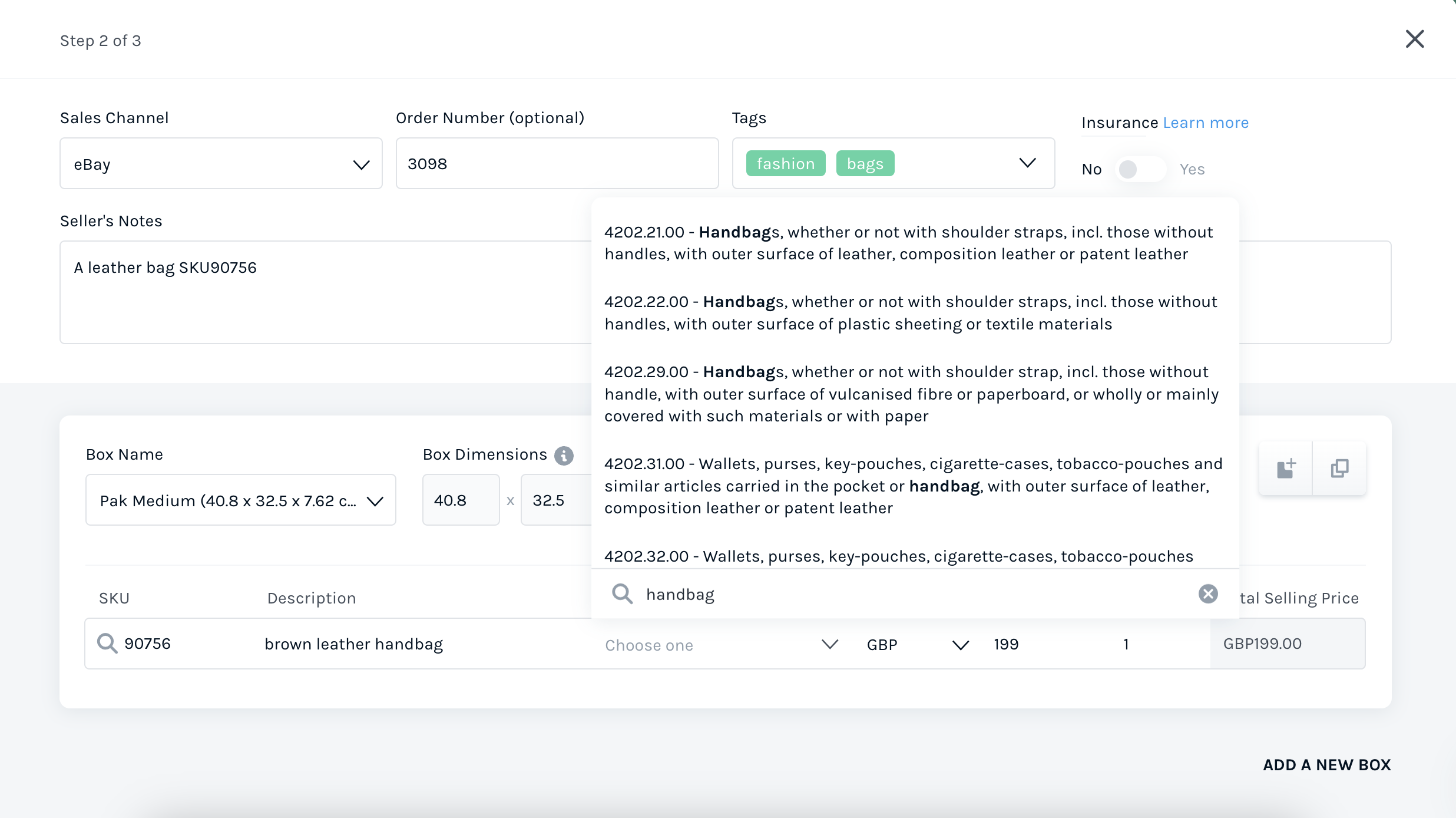HS Codes, Address Validation and T&Ds Features
This guide provides detailed insights into three features of the Easyship platform:
- Taxes and Duties (T&D) calculation
- HS (WTO Harmonised System) customs codes for delivered items
- Delivery address validation
Taxes and duties
Easyship's T&D feature enables you to accurately calculate taxes and duties for international shipments. While our system utilizes up-to-date data to provide precise cost estimations, there are a couple of considerations:
- Non-percentage duty tariffs are not supported. Certain countries, such as Switzerland, impose a one-off import duty fee instead of calculating percentage, which is currently not supported.
- Import regulation changes. Certain countries, such as Saudi Arabia, may undergo frequent import regulation changes. Currently, there might be a time gap before Easyship accommodates these adjustments.
This endpoint is rate-limited by 100 requests per day and 3,000 requests per month. To leverage the Taxes and Duties API or the Dashboard functionality, you need to provide essential data:
- origin country
- destination country
- shipment insurance fee
- shipment delivery fee
- for each item: HS code and total value
For a detailed guide on endpoint behavior and error handling, refer to How to Calculate Taxes and Duties.
See our T&D calculators for functionality testing:
- Free Duties and Taxes Calculator United Kingdom | Easyship
- Free Import Duty & Taxes Calculator United States | Easyship
HS codes
Utilize Easyship's HS codes feature to search for universal codes that categorize your shipped products. HS codes, part of the Harmonized System, are internationally recognized for classifying goods.
HS code feature can be easily integrated into any third-party platform via Easyship API to get access to the Easyship HS Code database. Below, you will find an example of what it looks like in the Easyship dashboard.

Access all available HS codes on the Easyship dashboard or through the HS Code API. The HS Code API endpoint is rate-limited by 1,000 requests per day and 30,000 requests per month.
Easyship employs eight-digit WTO Harmonized System codes, where the last two digits are always 00 (e.g., 42029100). For a more specific category, leave the first six digits unchanged and replace the last two with 00 (e.g., 42029190 → 42029100).
Address validation
Easyship's address validation feature performs four critical operations related to physical delivery addresses:
- Confirm address deliverability.
- Ensure correctness of address format for couriers.
- Correct invalid addresses.
- Transliterate non-Latin addresses into their Latin formats.
The Address Validation API endpoint has standard Easyship rate limits: 10 requests per second and 60 requests per minute.
Address deliverability
Deliverability of a physical address confirms that a courier is aware of this address and your shipment can be delivered.
In terms of Easyship, deliverability check does not change a destination address: it only confirms whether it corresponds to the courier database address or not.
Address format correctness
Address format can be correct in accordance with regional postal system requirements and courier requirements.
In terms of Easyship, address format correctness check changes a destination address to ensure that:
- The address is deliverable
- The final version of the address corresponds to the local postage requirements
- All address fields are correctly passed to a courier
Address format correction
A delivery address can be entered in an invalid way, e.g.:
- Postal code missing
- Address and postal code mismatch
- Duplicate data
- Spelling errors
The Easyship address validation feature includes automatic correctness check which changes a destination address to ensure it does not include user-side errors.
Address transliteration
For countries using non-Latin alphabets, the address is transliterated into the Latin format ensuring that the Latin version of an address is deliverable and correct.
Transliteration is conversion of text from one writing system to another.
In terms of Easyship, address transliteration changes a destination address by creating its Latin version (transliterated, not translated) understandable for English speakers.
Updated 7 months ago
